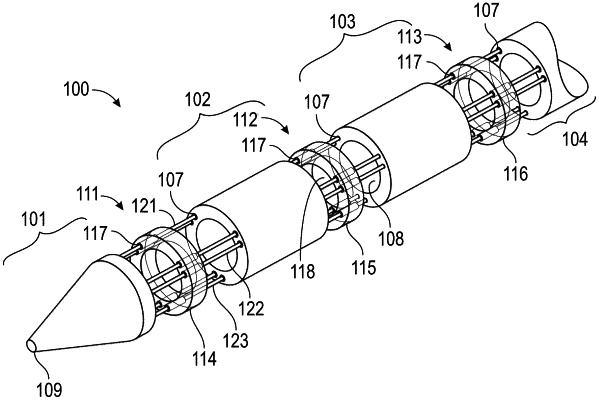| CPC A61B 34/20 (2016.02) [A61B 17/3478 (2013.01); A61B 34/32 (2016.02); G06N 5/01 (2023.01); A61B 2017/00314 (2013.01); A61B 2017/00323 (2013.01); A61B 2017/00367 (2013.01); A61B 2017/00867 (2013.01); A61B 2034/107 (2016.02); A61B 2034/2063 (2016.02); A61B 2034/2065 (2016.02); A61B 2034/301 (2016.02)] | 15 Claims |

|
1. A system for autonomous movement of a steerable surgical device that includes a first tubular element, a second tubular element longitudinally displaced from the first tubular element, and a joint comprising a flexible tubular element between the first and second tubular elements, and that is insertable into tissue of a mammalian body, the system comprising:
a plurality of surgical device actuation elements comprising a first motor for controlling linear insertion of the steerable surgical device, a second motor for controlling rotary position of the steerable surgical device, and at least two electrically operated actuators configured to effectuate pivotal movement between the first tubular element and the second tubular element, wherein the at least two electrically operated actuators comprise shape memory alloy actuators that each extend in a longitudinal direction through longitudinal bores defined within the flexible tubular element, and wherein the shape memory alloy actuators are isolated from an exterior surface of the joint and prevented from contacting the tissue upon insertion of the steerable surgical device therein;
an imaging apparatus comprising an ultrasound imaging probe arranged external to the mammalian body and configured to ultrasonically detect a position of a tip of the steerable surgical device within the tissue;
at least one processor configured to:
generate a transit path of the steerable surgical device through the tissue between an insertion point and a target point;
control the plurality of surgical device actuation elements to advance the steerable surgical device through the tissue along at least one segment of the transit path;
utilize signals obtained or derived from the imaging apparatus to identify the position of the tip of the steerable surgical device within the tissue, identify deviation of the position relative to the transit path, and generate an updated transit path; and
control the plurality of surgical device actuation elements to advance the steerable surgical device through the tissue along at least one segment of the updated transit path from the position to the target point;
wherein the system is configured to cause the steerable surgical device to transit through the tissue between the insertion point and the target point under control of the at least one processor without human intervention.
|